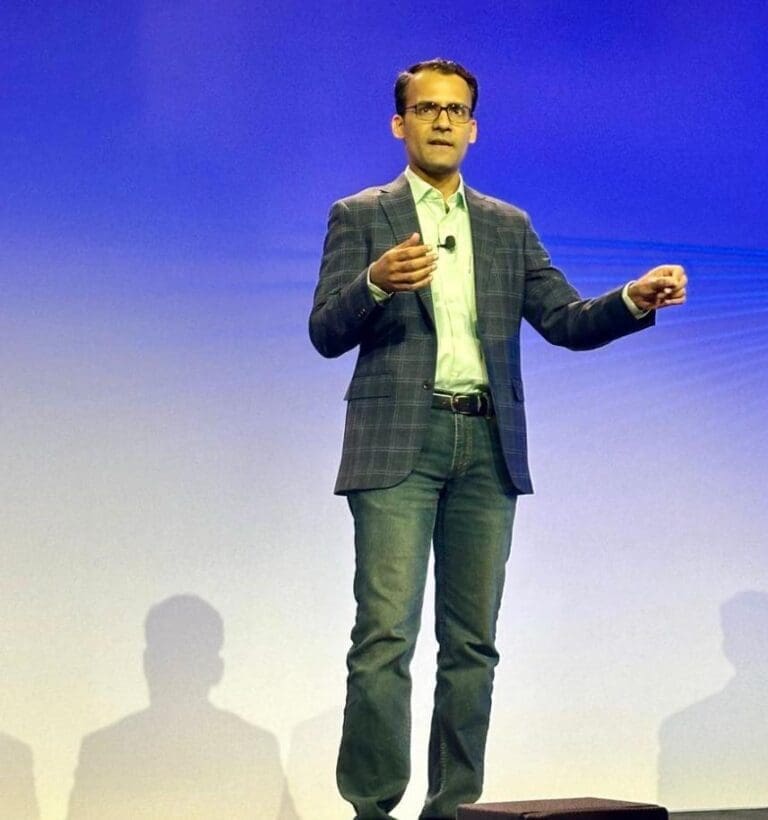Enterprise growth today is not about brute-force expansion. It is about precision—the ability to align resources with real-time market signals and operationalize strategy quickly. Revenue operations, once a back-office reporting function, is now becoming the strategic foundation of go-to-market design. Few leaders have shaped this shift more directly than Roshin Unnikrishnan.
As Senior Director of Growth and Revenue Operations at Cisco and a member at Operators Guild, Roshin has helped reimagine the RevOps model at scale. With over a decade of experience across North America, Europe, and Asia, he has led a transition from isolated insights to systems-based intelligence. His approach integrates data, tools, and teams into a unified, responsive framework.
“The real power of AI in RevOps isn’t just automation. It’s awareness,” Roshin says. “It gives us the ability to act with insight, adjust with speed, and build strategies that are responsive by design.”
From Signals to Strategy: GTM in the Age of AI
Artificial intelligence is changing how go-to-market teams operate. Predictive models now help revenue leaders detect early buying signals, prioritize high-probability accounts, and automate tasks that once required human effort. The result is a GTM engine that adapts to customer behavior in real time.
At Cisco, Roshin led a major redesign of global sales coverage affecting over 17,000 sellers. This wasn’t simply about restructuring. It was about building a responsive GTM system that could shift resources based on opportunity and evolving market dynamics. The model now supports Cisco’s blended revenue approach, spanning recurring SaaS, product-led growth, and strategic enterprise sales.

Post-Acquisition Execution: A New Role for RevOps
M&A integration is no longer just about aligning systems and org charts. Success increasingly depends on the ability to unify go-to-market motions, harmonize data, and operationalize growth across teams and products.
Roshin played a key role in the integration of Splunk following Cisco’s $28 billion acquisition. His focus was on aligning the revenue architecture of two companies with distinct operating models. By bridging operational and cultural gaps, he helped ensure that Splunk’s analytics capabilities could integrate cleanly into Cisco’s GTM stack.
“This is where RevOps has to deliver both technical insight and organizational fluency,” Roshin explains. “It’s not just about making systems talk to each other. It’s about ensuring strategy, telemetry, and execution all move in sync.”
Forecasting as a Feedback Loop
Forecasting is no longer a quarterly ritual. It has become a continuous feedback loop powered by real-time data and predictive modeling. Roshin has led initiatives to deploy AI-based forecasting systems that combine sales activity, customer engagement, and product usage telemetry to improve accuracy and agility.
These models help revenue teams detect pipeline risk, identify bottlenecks, and respond faster to changing conditions. “We’re building forecasting systems that don’t just reflect the future,” Roshin says. “They help shape it.”
In addition to his operational work, Roshin contributes to the academic and industry discussion on AI in GTM through thought leadership. He was a featured speaker at an IEEE event titled “Agile Implementation in Computational Intelligence Projects and Real-World Applications of Computational Intelligence in GTM and Revenue Operations,” where he shared insights on applying AI to transform revenue functions.
RevOps as a Strategic Discipline
Revenue operations are not just a function anymore. It is becoming the infrastructure that connects finance, product, sales, and marketing with shared execution models and unified metrics. AI accelerates this convergence, but operational leadership brings it to life.
With a background in management consulting and systems engineering, and recognition as a senior IEEE panel member, Roshin brings a rare blend of technical fluency and strategic clarity. At Cisco, he has helped build cross-functional operating frameworks that scale across global teams and business units.
From Intelligence to Execution
In the next phase of enterprise growth, it won’t be headcount or tooling that determines success. It will be the ability to act on intelligence with speed and precision.
“High-performing RevOps teams aren’t just keeping score,” says Roshin. “They are driving the playbook.” As go-to-market models become more dynamic and AI becomes more embedded, leaders like Roshin are defining how organizations can turn data into action at scale.

